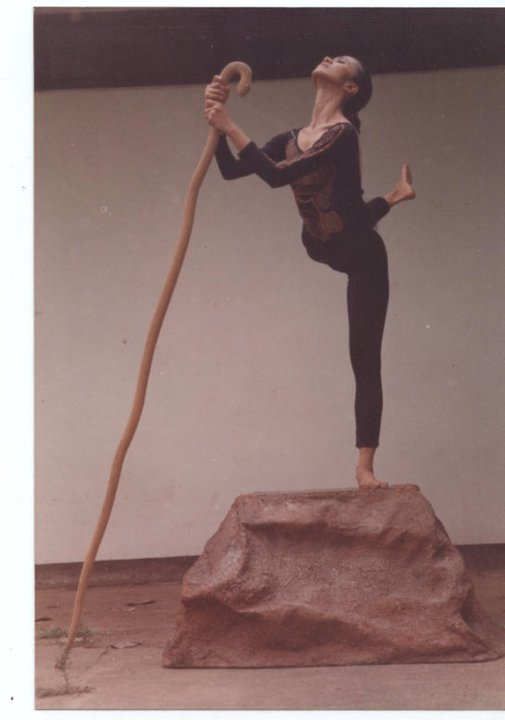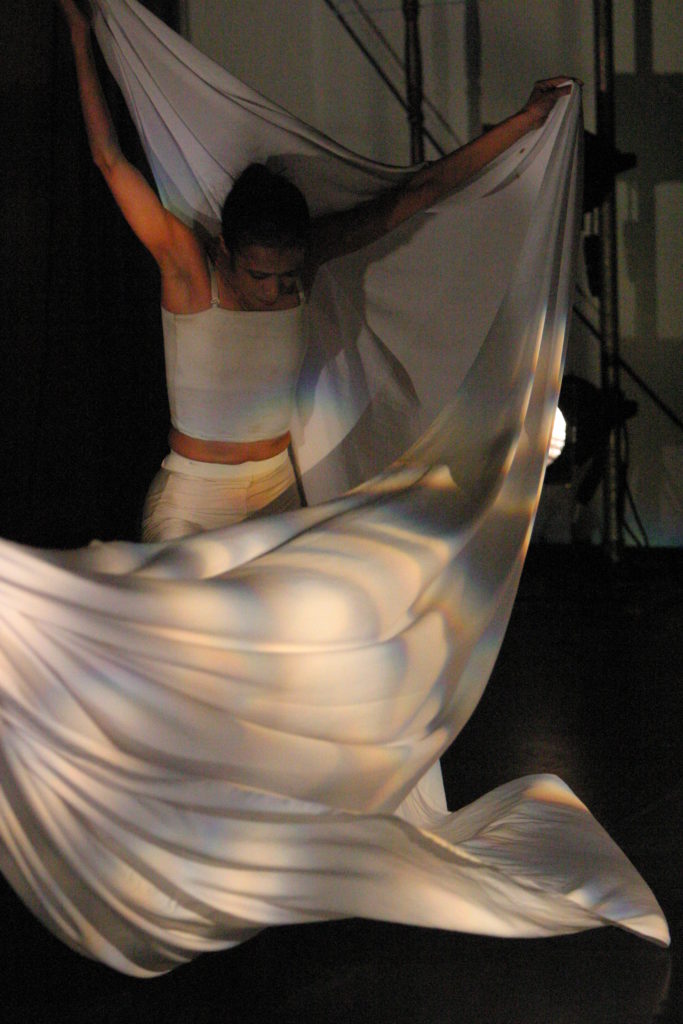(1999)

A generation of dancers can attest to the fact that the divinity, imperceptibly touching through and in movement has altered their lives. For good or ill, most of us have not really decided.
But that is how it should be. Putting a mark on whether it was for good or ill only succeeds in driving the touch away. Describing how a rose smells only detracts from being able to savor its scent more completely.
Because dancers really live for the moment. Whether or not that is why we have become dancers, or we are like that because we are dancers, again, we cannot say. But it also explains why the rest of the population do not seem to understand us, or at the extreme, are mystified by what we do, why we do it. (Mostly, they ask us how we do it).
Either way, we are more or less left in the empty spaces in the cultural debate, remembered only because when the words cease to make sense, the dancers come to affirm what the debate was all about — the human spirit lived in the body.
Let’s face it — no event is complete without the lively and refreshing participation of the dance. The synthesis is there — lived, complete.
So why even talk about it?
Well, because the world is ceasing to listen to the language of dance.
The information age does not have the memory to process and send out that information. And when conversations take place largely in cyberspace and everything is not as tactile as we, dancers, know it to be, what does that make of our work — work that is all about the exchange of energy, touching, feeling and being totally present?
What does that make of the place we have spent a lot of our waking hours, namely, the dance studio?
We are concerned because even to each other, we have not had the space to share our thoughts.
So, who owns the space?
Is there anyone who owns the dance?
So then, what is the dance?
“… the reason why we don’t tell stories the way they were told a long time ago is that we don’t believe anymore that a man could become a bird or a bird become a man, so we have to tell them differently.” – An Iroquois storyteller as told to Laura Simms, contemporary storyteller, qtd. in Steinman, Louise. The Knowing Body: Elements of Contemporary Performance and Dance [1]
Contemporary dancers concern themselves with the new ways stories are being told, and yet know that in the center of that story is the body itself. Because in the body can be found the pattern that connects all living creatures.
We know this when we remember that when primitive man danced as a certain animal, it was to have knowledge of that animal, and consequently of the other creatures around him/her. Connections … links … the cycle of things … all affirmed with knowledge through the body.
I guess those are the basic things that contemporary dancers are concerned with. The space they wish to occupy these days includes a concern for how individually they live and breathe in this world (and not just wholly within the “dance community” they grew up in), how their training can contribute to their well-being and health, how the audience has come to view them as dancers, how they can be as dance artists in the community.
The contemporary dancer has a legacy of numerous dance traditions and styles, not to mentions dance teachers of a certain style. Today, when all categories seem to be blurring (in the arts, in the state, in religion), the concern is more with expanding one’s range of movement and cultivating a dynamic relationship to one’s body — one that changes with time, resonant of one’s time and therefore, more appreciative of differing relationships.
In other words, more appreciative of difference.
Knowing this to be the case, when is dance contemporary?
What is contemporary dance?
I guess there is really no ready-made answer for this because the process of defining contemporary, of defining dance itself, of working with actual bodies who live and breathe in contemporary times, makes the whole event, the experience, the total act and the total rite of discovering, contemporary dance.
“These things have to be found. They don’t just fall out of the sky. These are things which have to be worked out, things one is always having to rediscover, step by step.”
– Pina Bausch, German choreographer
At this point though, we could venture to say (with a resilience for those who wish to refute) that a dance becomes truly contemporary, when it has a conscious link to a past, a heritage, while defining and developing a relationship to it.
That heritage includes a dance tradition, a folk tradition, a personal and collective memory.
I guess, under those broad terms, “re-readings” of “old” works could be considered contemporary.
In the intellectual debate, the dancers are supposed to have arrived late.
Yes … maybe … but we have a good excuse for it (though we admit it is an excuse valid only for being late and not, for being absent).
The excuse being that our intelligence is first and foremost, body-centered.
The blank stare that people think they get from most dancers is really a very gracious one. Dancers in the studio do not pretend to know everything. As a matter of fact, they tend to give up most of what they know in acknowledgement of the basic premise that the knowledge must first and foremost, come from the experience of their bodies — the intelligence of the body arising from a commitment to the moment. That is vulnerable. That is noble.
[1] (Steinman 1986)

So I guess the question can be asked, who arrived late for what?
Still and all, dancers today are “looking sideways,” and looking at the interdisciplinary framework that exists in the debate in the academe, to shed light on their truly ephemeral past.
More and more, we are asking ourselves what was the context in which dances were created and performed, and that would help us understand and make them come to life today.
Why were they made in the first place and how did the community receive them?
“Why did the gods dance? How did they bring Creation into being?” – Chandralekha, Indian choreographer
To look at dance in these various ways means to look at moving bodies in different ways. And so, more and more, we ask ourselves, what is a beautiful body? What constitutes beauty?
The answers, again, need to be found. But maybe from this, we and our audience would come to know and appreciate our warm, brown, Asian bodies. That would be our growth as dance artists, and that would be the debate that is contemporary.
So, who is to say if a dance project has a “high-impact” or not (to borrow from bureaucratic lingo)? How is impact measured in dance?
Any dancer knows, progress is made through painful increments — the small, and I mean, small contribute to the whole, and whole here not necessarily meaning the sum of the parts, but rather, the ebb, the flow of the parts, the crevices, the little spaces of breath — these are what make and nurture the dance.
All things flow into the pot — all dancer’s experiences, all images produced by the culture, all perceptions that are played out in the body. When they are mixed, there is a certain stillness and that is movement, that is dance.
So, relax. Enjoy it. Let the dance unfold before you. That is as contemporary an attitude to the dance that we as dancers could hope for. Because contemporary means that the observer cannot be separated from the observed, and so dear audience …. contemporary dance just has to include you.
– Myra Beltran
Choreographer, Dance Forum
They said …
“ If I can’t dance, I don’t want to be part of your revolution.” – Emma Goldman
“ … if the dancer dances, everything is there. The meaning is there, if that’s what you want.” – Merce Cunningham
“We are at a very critical time in the history of humankind, and if we don’t dance on the demons, the demons will dance on top of us. At this point, just before the next millennium, we arrive at a very critical point of transformation … and so the Shakti keeps dancing.” – B.K. Jayanti
“We don’t dance in a social vacuum; we dance in order to garner energy for ourselves, to make it transparent for the spectators and convey it to them …. I’m researching into its true content (tradition) and into dance that is bound up with everything.”– Chandralekha
“Never trust a god who doesn’t dance.” – Nietzsche
Works Cited
Steinman, Louise. 1986. The Knowing Body: Elements of Contemporary Performance and Dance. Shambhala.
Young, Dudley. 1992. Origins of the Sacred: The Ecstasies of Love and War. Harper Perennial.
n.d.